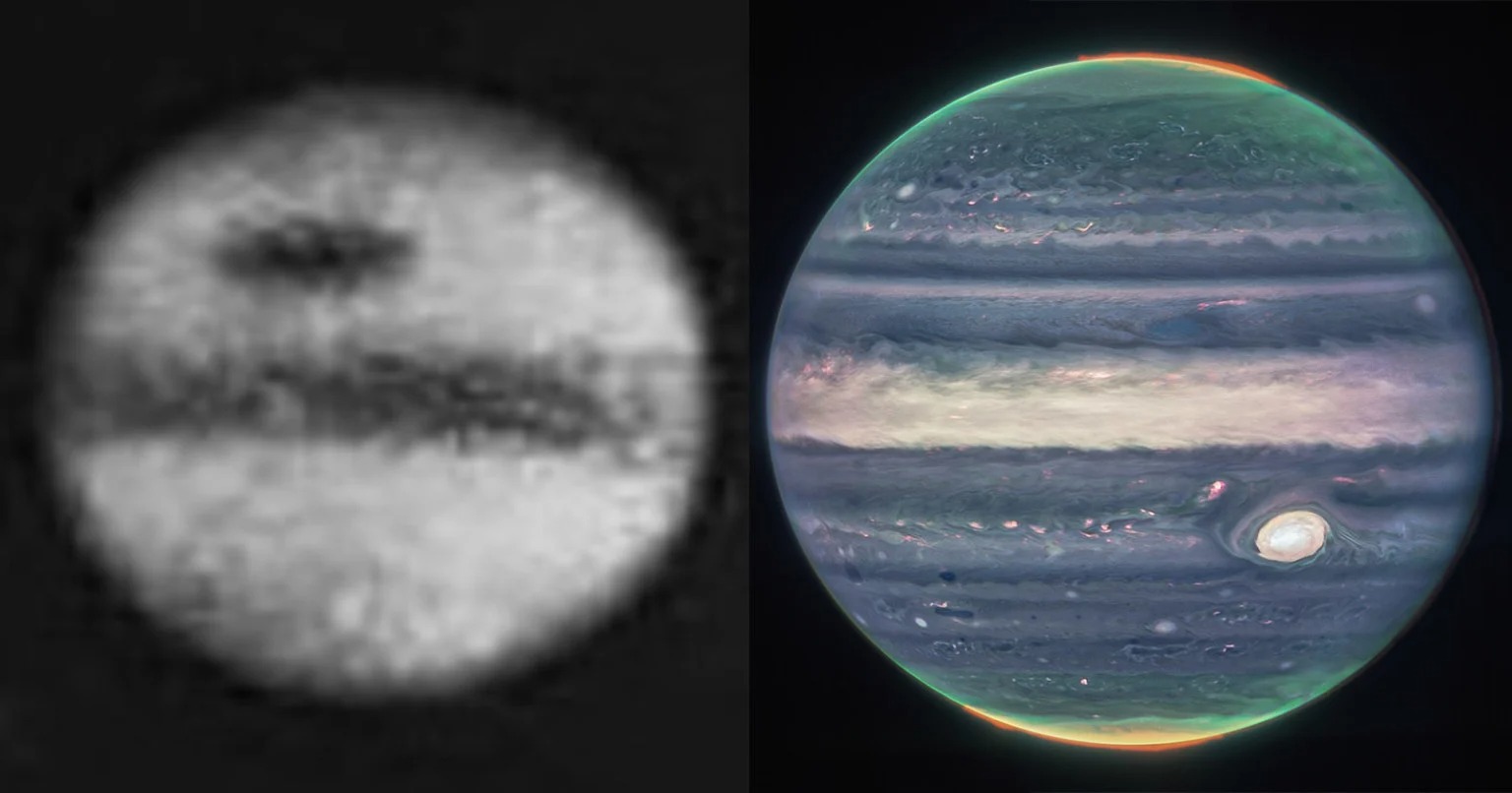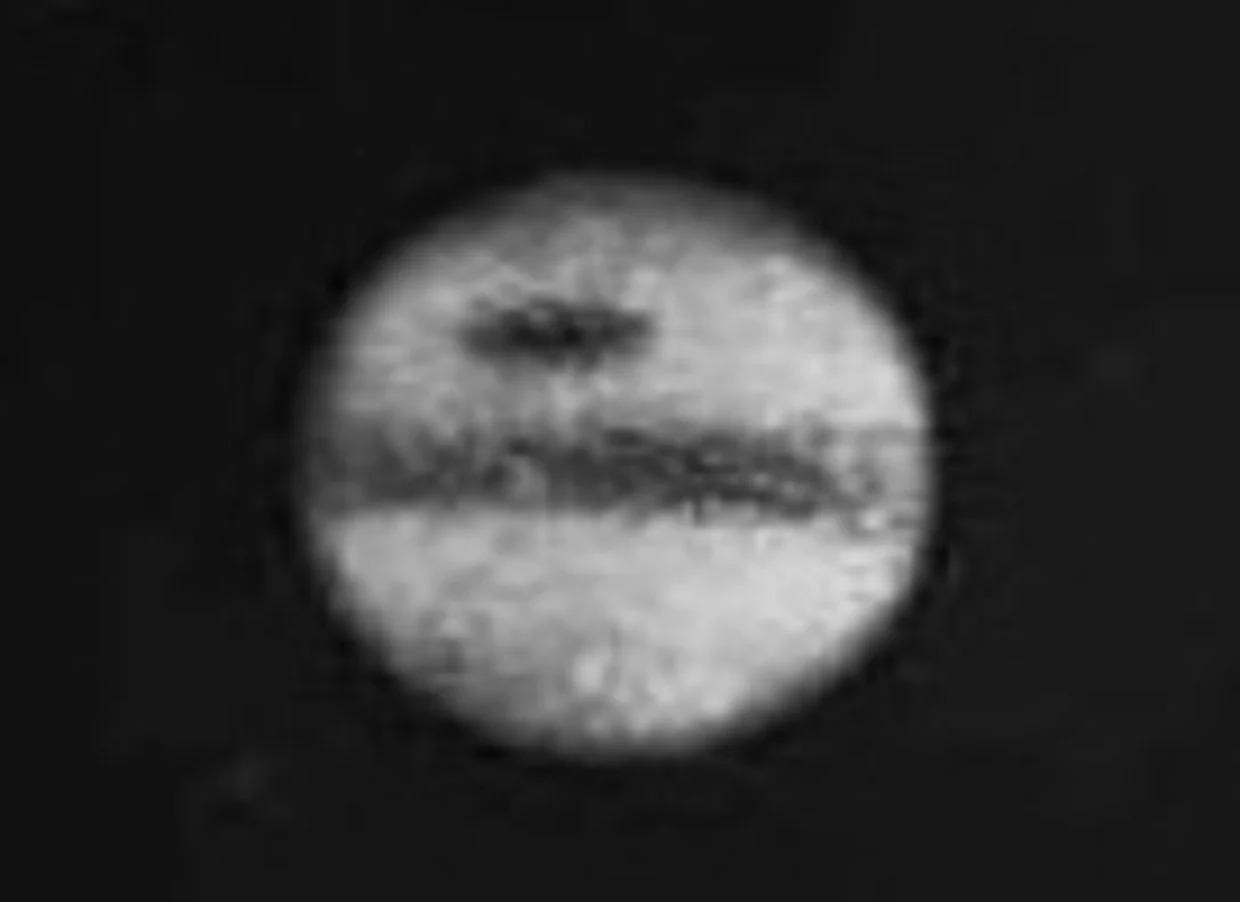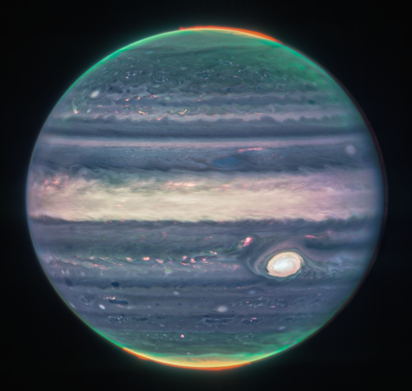Astronomer Jasmine Singh shared a fascinating comparison of the very first image of Jupiter, which is the first ever photograph of the planet, together with a fresh photo obtained by the James Webb Space Telescope (JWST). The very first photograph of Jupiter was taken in 1879 by the Irish astronomer Agnes Mary Clerk, who published it in the book “A Popular History of Astronomy During the Nineteenth Century”.

A recent JWST photo taken on July 27, 2022, has such amazing clarity that you can even notice the dancing auroras of Jupiter over both of its poles. The side-by-side comparison highlights how much astrophotography has improved over the past 142 years.
The earliest image ever taken of Jupiter in 1879 vs. the most recent composite image of Jupiter taken by JWST: pic.twitter.com/we2HRTe49S
— Jasmine ???????? (@astro_jaz) August 27, 2022
The photo of the XIX century is grainy, but it is still obvious that this is Jupiter due to the characteristic stripes on the planet caused by differences in the chemical composition and temperature of atmospheric gas.
Great Red Spot
Another unique feature of Jupiter is its Great Red Spot, an area of constant high pressure that generates the largest anticyclonic storms in the Solar System. This characteristic spot can be seen in the photo of the Clerk of 1879. But the first image is shown upside down, which gives the impression that the vortex is in the Northern Hemisphere, and not in the Southern.

Another fascinating insight is how much the Great Red Spot has shrunk since 1879. This has been confirmed by research. Once upon a time, the monster storm was so huge that three of our Earths would fit in it. But now it is estimated that its size would have absorbed only one of our planets. Scientists disagree about the reasons for the spot reduction.
Photo by James Webb

The JWST 2022 photo of Jupiter, consisting of several images, has an expressive blue hue, different from the usual red image of Jupiter. The picture was taken by a NIRCam camera using three specialized infrared filters. The infrared spectrum is used to detect details that the eye cannot see. Then the resulting images were converted into visible images: long waves of light appear more red, and shorter ones appear more blue.
Previously, we reported on how NASA photographs distant space.
Follow us on Twitter to get the most interesting space news in time
https://twitter.com/ust_magazine
